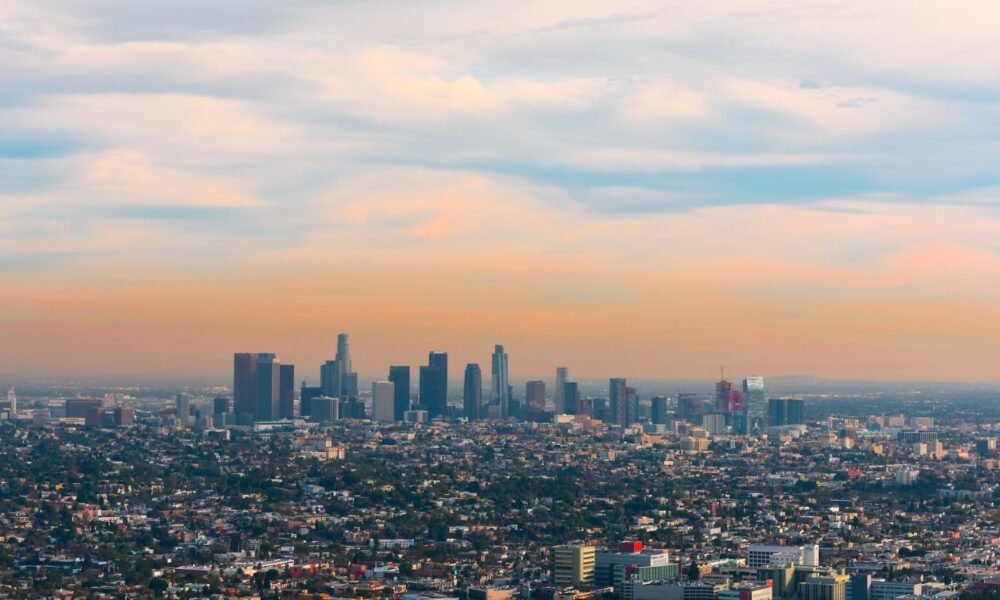There are almost 2,000 gas power plants and approximately two million miles of gas pipelines running across the United States. While this sprawling infrastructure currently plays a large role in keeping the power grid humming, it is also inextricably linked to disproportionate harms on communities of color and low-income communities.
Gas infrastructure is polluting the air, water, and land with cumulative effects that are worsening the health and livelihoods of already marginalized groups. It’s time these equity concerns are prioritized in the discussion of why and how we transition away from a power grid that is heavily dependent on gas.
Gas infrastructure is inequitably sited
Like much polluting infrastructure, gas plants are disproportionately located in communities of color and communities with higher poverty rates. A legacy of racism in housing policies and siting practices has contributed to these demographic disparities near gas infrastructure. More recently, ongoing discrimination continues to push marginalized groups into areas with existing polluting infrastructure.
In New England, the percent of people of color living near fossil fuel power plants is up to 23.5 percentage points higher than the percent of white people living in those same areas. On the other side of the country, half of California’s gas plants are in communities considered among the state’s 25% most disadvantaged communities. These glaring inequities are still playing out in areas where new gas plants are being built. Dominion Energy is pushing to build the largest gas peaker plant in Virginia in an area where 44% of the residents are people of color and 25% are low income.
Even as some parts of the country transition away from fossil fuel infrastructure, the retirement of gas plants has become another driver of inequity. California recently extended, for the second time, the operations of three gas plants to 2026. These plants, which were originally slated to close in 2020, include the Ormond Beach Generating Station located in the predominantly Latinx, low-income community of Oxnard.
It’s not just gas power plants that are inequitably sited. Other gas infrastructure, such as pipelines and compressor stations, follow similar trends. And all this polluting infrastructure has serious health and environmental implications for the surrounding communities.
Gas infrastructure harms people and the environment
The are multiple harms from gas infrastructure on people and the environment.
Air pollution
Gas-fueled power plants and compressor stations release emissions that pollute local air and have dangerous health impacts to nearby residents. Most notable of these polluting emissions are nitrogen oxides (NOx). Elevated exposure to NOx emissions is linked to asthma, lung, and heart damage, and affects pregnancy and birth outcomes. In the case of compressor stations, limited monitoring of pollutants being emitted means the negative health impacts on nearby communities is likely underestimated.
Water contamination
In almost every step of the gas supply chain, water resources are at risk of contamination. Hydraulic fracturing (more commonly known as fracking) to extract underground gas, construction of gas pipelines, and water usage at gas plants have all had instances of contaminating local drinking water supplies and other bodies of water. Studies are increasingly revealing the serious health impacts of this water contamination, such as how fracking has polluted drinking water supplies and negatively affected infant health.
Land impacts
Gas infrastructure, particularly pipelines, often traverses wide swaths of land, encroaching on tribal rights, agriculture, wildlife, and outdoor recreation. Tribal groups have noted that gas and oil pipelines often ignore tribal sovereignty, damage sites of cultural significance, and harm vegetation growing on the lands. For farmers, pipeline construction degrades soil quality, negatively affecting crop yields and their livelihoods.
Climate impacts
The power sector accounts for approximately 25% of heat-trapping emissions in the United States, with gas plants accounting for 45% of carbon dioxide (CO2) in the power industry. Leaks in gas pipelines and wells also release methane into the atmosphere, a much more potent heat-trapping emission than CO2. These heat-trapping emissions from gas infrastructure contribute to more frequent and severe weather events including heat waves, winter storms, and hurricanes with frontline communities often bearing the brunt of these impacts.
Higher and more volatile energy bills
An electric system that is over-reliant on gas can contribute to higher and more volatile electricity bills. Furthermore, thermal resources (gas, coal, and oil) are often overvalued for their contribution to maintaining grid reliability. Not only is this bad for keeping the lights on, but it means that gas power plant owners are being overpaid and those extra payments are coming from customers.
During Winter Storm Uri in 2021, a devastating storm where power outages contributed to hundreds of deaths, Texans saw the extreme of price volatility from over-dependence on the gas system in a competitive power market. Wholesale electricity prices rose 7,400%, in part because gas plants disproportionately failed in the cold weather causing electricity supply shortages.
Higher and more volatile electricity bills are particularly difficult for households with a higher energy burden. Studies show that low-income households spend almost 9% of their income on energy, on average, compared to 3% for non-low-income households. And compared to white households, Black, Latinx, and Native households spend between 20 and 45% more of their income on electricity bills.
Compounding effects on other vulnerable populations
The disproportionate effects that all these harms have on communities of color and low-income communities is well documented, but it doesn’t end there. These harms intersect across social segments, particularly affecting other vulnerable populations.
For example, older adults are more vulnerable to heat waves due to aging immune systems, higher likelihood of dehydration, and more limited mobility. In the 2022 summer heat wave in Europe, 90% of heat-related deaths were people aged 65 and older.
Exposure to air pollutants emitted from gas production aggravates existing respiratory illnesses and has been linked to increased childhood asthma rates.
Gas plants are more likely to be in communities with limited English proficiency, making it more difficult for these communities to advocate for stronger pollution standards or plant retirements.
Farmers must deal with increasingly extreme weather events and land degradation from gas infrastructure that put their livelihoods at risk.
Wells drilled for fracking near drinking water sources have been linked to higher incidences of pre-term births and low birth weight.
This is a small snapshot of how the power grid’s reliance on gas harms vulnerable populations. When intersected with low-income communities and communities of color, these compounding burdens breed more extreme inequality. So, why is the grid still so reliant on a resource with such known inequitable harms?
Steps towards a more equitable grid
Gas is often touted by its champions as the key to grid reliability. It indeed accounts for 40% of the electricity currently generated for the grid. But studies show that at least 80 to 90% of the US grid could be reliably served with renewable energy and there is limited to zero need for new gas plants for reliability. On top of that, the gas-for-reliability narrative is increasingly under scrutiny as gas plants and the associated infrastructure disproportionately fail in extreme weather conditions.
Gas doesn’t need to be the crux of a reliable electric grid. And based on the challenges gas faces in extreme summer weather in addition to its alarmingly poor track record in extreme winter weather, it shouldn’t be.
As the country moves to phase out its reliance on gas and other fossil fuel resources, equity needs to be a much bigger part of the discussion.
Grid planners should prioritize the retirement of gas plants and related infrastructure in low-income communities and communities of color. In parallel, there should be more concerted efforts to break down the barriers to the clean energy buildout. These reforms will be a much bigger boon to grid reliability and grid equity.
Unfortunately, we can’t undo the long history of harm that the energy system has disproportionately placed on communities of color, low-income communities, and vulnerable populations. But we can plan to transition to an electric grid where equity is underscored in the design and decision-making processes.
Clean energy, done right, avoids many of the very harmful impacts of gas-fueled power plants. The work we do now to create an equitable grid can have transformative benefits for communities and ultimately contribute to a fairer and healthier society and planet.

